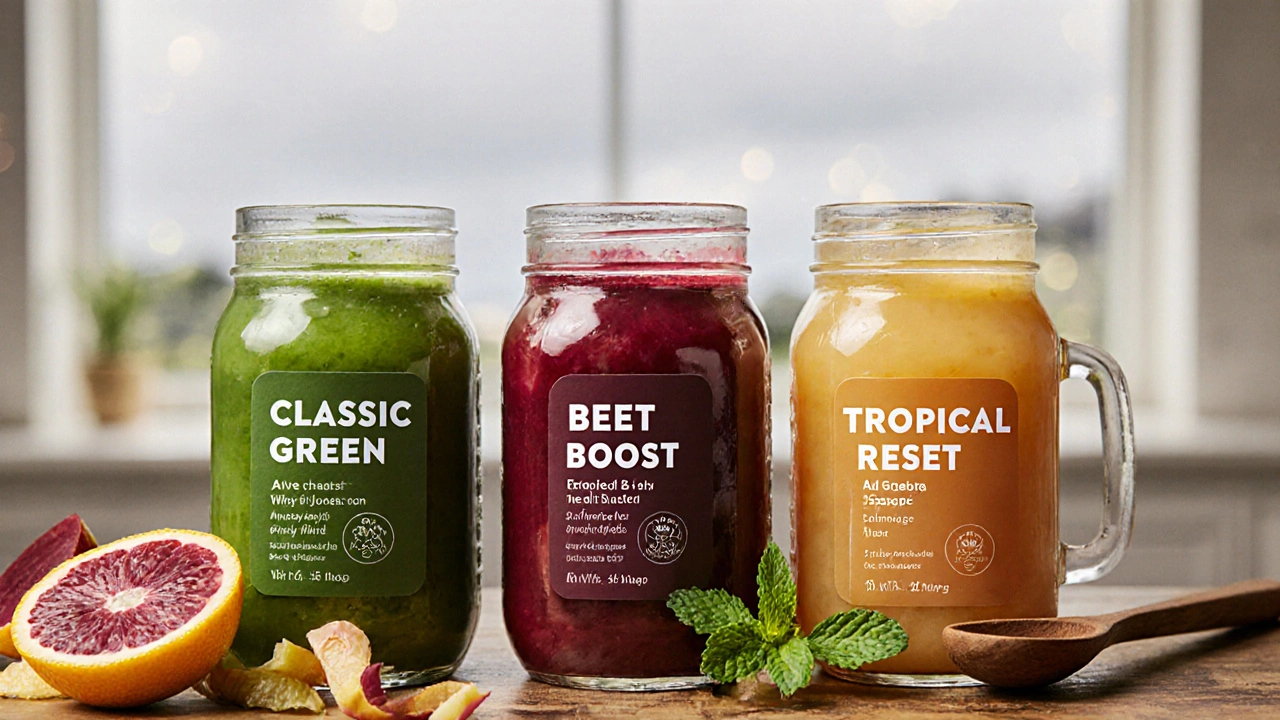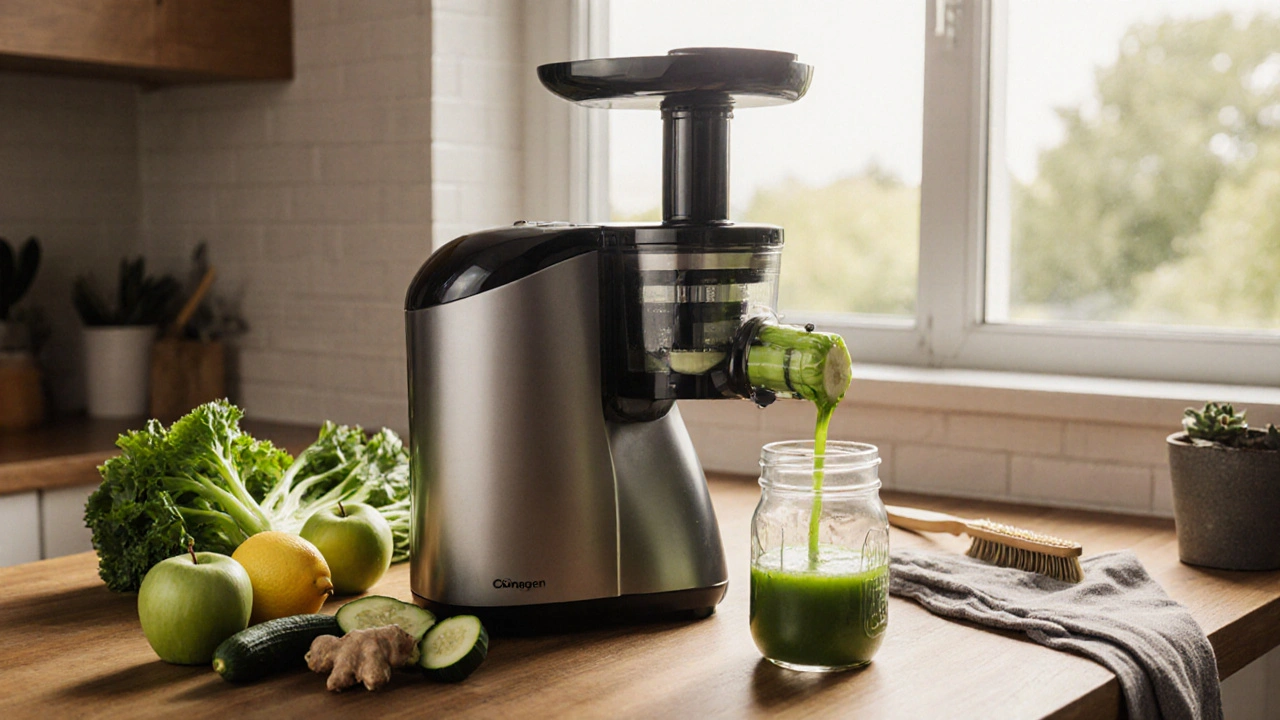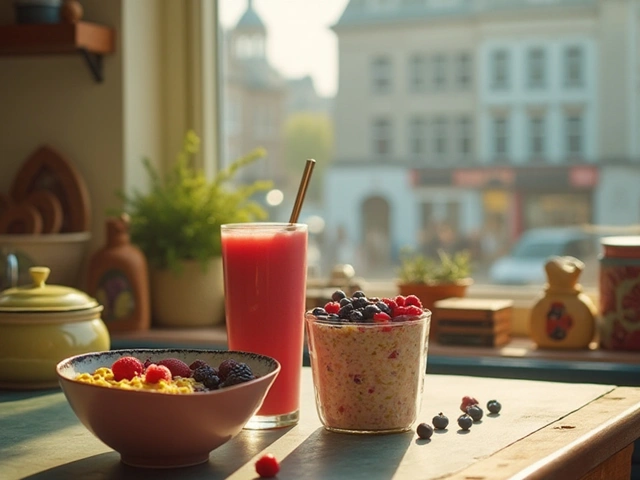Most people think juicing is just a trendy way to drink green slime. But if you’ve ever felt sluggish after a week of takeout, or noticed your energy dips by 3 p.m., you’re not alone. Juicing isn’t magic-it’s simple. It’s about getting the nutrients from fruits and vegetables into your body fast, without the bulk. And for beginners, it’s easier than you think.
Why Juicing Works for Your Body
Your digestive system spends a lot of energy breaking down fiber. When you juice, you remove most of that fiber, letting your body absorb vitamins, minerals, and antioxidants almost instantly. A 2023 study from the University of East Anglia found that people who drank fresh vegetable juice daily for four weeks showed a 22% increase in blood antioxidant levels compared to those who ate whole produce.
This doesn’t mean you should ditch whole fruits and veggies. Fiber keeps your gut healthy, stabilizes blood sugar, and helps you feel full. Juicing just gives you a quick nutrient boost-especially useful when you’re tired, recovering from illness, or just need a reset.
What You Actually Need to Start
You don’t need a $500 machine. A basic centrifugal juicer under £80 works fine for beginners. It spins fast to separate juice from pulp. If you want more nutrients and less foam, a masticating juicer (slow juicer) is better, but it costs more and takes longer to clean.
Here’s what you really need to get started:
- A juicer (centrifugal is fine for starters)
- A large glass or mason jar for storing juice
- A citrus press (optional, but great for oranges and lemons)
- A small brush to clean the juicer parts
- Organic produce when possible (pesticides concentrate in juice)
Don’t bother with expensive add-ons like pulp collectors or multiple speed settings. Focus on consistency, not gadgets.
Best Juices for Beginners
Start with flavors you already like. No one sticks with a juice that tastes like grass clippings. Here are three easy, tasty combos:
- Classic Green: 2 celery stalks, 1 cucumber, 1 green apple, half a lemon (peeled), a small piece of ginger (about 1 inch). This is mild, refreshing, and packed with hydration.
- Beet Boost: 1 small beet (peeled), 2 carrots, 1 apple, a quarter of a lemon. Sweet, earthy, and great for energy. Beets naturally lower blood pressure-studies show effects within hours.
- Tropical Reset: 1 cup pineapple, 1 cup mango, half a lime, a few mint leaves. No greens here. Perfect if you’re nervous about the taste of vegetables.
Always add a little citrus-lemon or lime-to balance sweetness and help preserve the juice. Ginger adds warmth and helps digestion. Start with small amounts and adjust as you go.

What to Avoid
Many beginners make the same mistakes:
- Using only fruit: A glass of apple or orange juice has the sugar of 4-5 fruits. It spikes blood sugar and doesn’t give you the full benefits of vegetables.
- Drinking it warm: Juice loses nutrients fast when exposed to heat. Drink it fresh, straight from the machine. If you must store it, keep it in a sealed jar in the fridge for no more than 24 hours.
- Thinking it’s a meal replacement: Juicing doesn’t give you protein or healthy fats. You’ll feel hungry. Use juice as a supplement, not a substitute.
- Buying pre-made juice: Store-bought "cold-pressed" juice is often pasteurized, which kills enzymes. Even if it’s labeled "100% juice," it’s usually just sugar water with added vitamins.
One woman in Norwich told me she tried juicing for weight loss and ended up gaining five pounds because she was drinking three fruit-heavy juices a day. She didn’t realize how much sugar she was consuming. Start with veggie-based recipes.
How Often Should You Juice?
There’s no rule that says you must juice every day. For most beginners, three times a week is plenty. Try one in the morning, right after waking up. Your body is primed to absorb nutrients fast.
If you want to try a one-day juice cleanse (not a long-term diet), do it on a weekend when you’re not working or traveling. Drink 4-6 small glasses (8-12 oz each) of vegetable-based juice spaced throughout the day. Add water, herbal tea, or bone broth if you’re hungry. Don’t fast for more than 24 hours without talking to a doctor.
People with diabetes, kidney disease, or those on blood thinners should check with their GP before starting. Juicing can affect medication levels-especially with greens like kale and spinach, which are high in vitamin K.
Real Results People See
Not everyone loses weight. Not everyone feels "detoxed." But here’s what actually changes:
- Clearer skin: Many notice fewer breakouts after 2-3 weeks. The antioxidants reduce inflammation linked to acne.
- Better digestion: Less bloating, more regular bowel movements. The enzymes in raw juice help your gut break down food.
- More energy: Not a caffeine buzz. A steady, calm alertness. You’re not crashing because you’re not loading up on sugar.
- Stronger nails and hair: Vitamin C, biotin, and silica from veggies show up here fast.
One teacher I know started juicing after a bad bout of flu. She drank a carrot-ginger-turmeric juice every morning for a month. Her colds stopped. She didn’t miss a day of work. She didn’t lose weight. But she felt like she could breathe better.
What Comes After the Beginner Phase?
Once you’re comfortable, you can experiment:
- Add wheatgrass or spirulina (a teaspoon, max-strong flavor)
- Try cold-pressed juice from local farms (if you can find it)
- Make smoothies instead-keep the fiber, blend in protein powder or nut butter
- Use juice as a base for salad dressings (mix with olive oil and apple cider vinegar)
Some people move on to making fermented vegetable drinks like kombucha. Others start growing their own herbs for juicing. But that’s later. First, just get used to the taste. Get into the habit. One glass a few times a week is enough to make a difference.
Final Thought: It’s Not a Cure, It’s a Habit
Juicing won’t fix your diet. It won’t reverse chronic disease. But it can be the first step toward eating more plants. And that’s where real health starts.
Think of it like brushing your teeth. You don’t do it because it’s a miracle. You do it because it’s a small, daily act that adds up. One glass of fresh juice might not change your life. But five a month? That’s five moments where you chose your body over convenience.
Can juicing help me lose weight?
Juicing alone won’t make you lose weight. Most weight loss from juicing comes from cutting out processed food and sugar. If you’re drinking only fruit juice, you might even gain weight. For real results, pair juicing with balanced meals and regular movement. A vegetable-based juice as a snack or morning drink can help reduce cravings-but it’s not a magic solution.
How long does fresh juice last?
Fresh juice starts losing nutrients within 20 minutes of being made. If you store it in a sealed, airtight glass jar in the fridge, it can last up to 24 hours. After that, oxidation kills the enzymes and vitamins. Always drink it as fresh as possible. Never freeze juice-it destroys the delicate nutrients.
Is it better to juice or blend?
Juicing removes fiber, so nutrients absorb faster. Blending keeps fiber, which helps with fullness and blood sugar control. If you’re trying to give your digestive system a break, juice. If you want to feel full longer and support gut health, blend. Many people do both-juice in the morning, smoothie for lunch.
Do I need organic produce for juicing?
Not always, but it helps. Pesticides concentrate in juice because you’re using more produce than you would eat whole. If you can’t afford all organic, focus on the "Dirty Dozen"-produce with the highest pesticide levels: strawberries, spinach, kale, apples, grapes, and celery. Wash everything well, even organic.
Can I juice if I have diabetes?
Yes, but be careful. Fruit juice raises blood sugar fast. Stick to low-sugar vegetables like cucumber, celery, spinach, kale, and broccoli. Add a little lemon or ginger for flavor. Avoid carrots, beets, and apples unless you’re mixing them with mostly greens. Monitor your blood sugar before and after. Talk to your doctor or dietitian before starting.
Why does my juice taste bitter?
Bitterness usually comes from too many greens, especially kale or collards. Start with mild greens like romaine or spinach. Add more sweet produce-apple, pear, pineapple-to balance it. A small piece of ginger or a squeeze of lemon can also cut bitterness. Don’t give up-your taste buds adjust in a few days.






